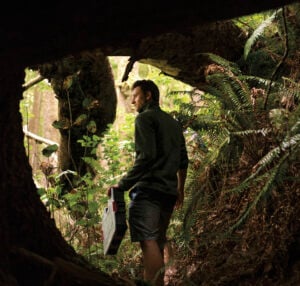1. Lagomorphs have no paw pads! Instead, the bottoms of their paws are entirely covered with fur. Built for strength and durability rather than speed, lagomorphs feet are cushioned with a layer of thick fur.
2. Arctic hares (ᐅᑭᐅᖅᑕᖅᑐᒥ ᐅᑲᓕᖅᐸᒃ or Ukaliq in Inuktitut) can hop upright on their hind legs like kangaroos and reach speeds of up to 48 kilometres per hour!
3. Pet bunnies may be one of the world’s cuddliest companions, but it wasn’t always that way. Prior to 600 A.D., rabbit meat was a popular choice of protein during lent, particularly in southern France. As a result, rabbits were bred to be bigger and fatter to get more meat. In the 16th century, different breeds were discovered and eventually bred for competitions and exhibitions in the 19th century. Today, pet rabbits are one of the world’s most popular pets and can make great companions when properly cared for.
4. Lagomorphs get eaten by everything! They serve as prey for predator species around the world, from carnivores (think lynx, foxes and coyotes) to predatory birds such as owls, hawks and eagles. And, of course, rabbit is also a popular protein for humans.








